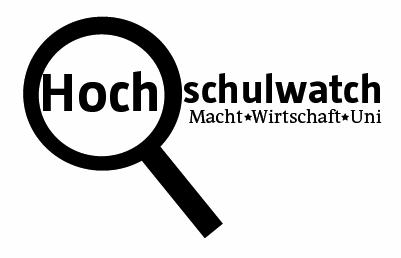 Although Serbia is home to only seven million citizens, it has no less than 610 print media outlets and 456 electronic media platforms.
Although Serbia is home to only seven million citizens, it has no less than 610 print media outlets and 456 electronic media platforms.
Lack of transparent ownership, lack of freedom and an inadequate withdrawal of the state from various media outlets are only a few of the numerous problems acknowledged by media professionals. The Serbian press remains in an intensely difficult situation, yet the introduction of new technologies is increasingly viewed as a possible remedy.
THE MARKET
The press: One of the largest problems facing the domestic press is immense competition: according to data provided by the Serbian Business Registers Agency, there are no less than 610 print media outlets in the market, including 20 daily newspapers and 83 weekly magazines. Most of them are available nation-wide. In 2009, advertisers invested €36 million in print media outlets, according to data from the Independent Journalists’ Association of Serbia (NUNS). On average, this amounts to €72,000 euro per each registered print media outlet, which means that each outlet had to survive on less than €6,000 per month (NUNS: Media Dossier No. 32, 2010 / NUNS: Dosije o medijima broj 32, 2010). Although the press comprises more than a half of all media outlets in the country, it receives only 22 percent of all the money spent on advertising in the media, which is a result of the continuing trend of increased investment in television. According to the International Television Expert Group, three years ago Serbia held the world record in time spent watching TV, as the average Serbian citizen spends 302 minutes each day watching TV, more than five hours (for comparison, the average U.S citizen watches 298 minutes per day). If we also take into account the fact that only around seven percent of Internet users read online editions of print media, it becomes evident that the press market is struggling for survival.
Electronic media outlets: According to data collected by the Republic Broadcasting Agency, Serbia has 134 registered TV stations (six of them with national coverage, 30 regional and 98 local stations) as well as 322 radio stations (five national coverage, one provincial, 48 regional and 268 local stations). There are two public service broadcasters in the country: the Public Service Broadcaster of Serbia (Radio-televizija Srbije/Radio-Television Serbia – RTS) with two television and three radio channels, and the Public Service Broadcaster of Vojvodina (Radio–televizija Vojvodine/Radio-Television Vojvodina – RTV) with two television and three radio channels. At the moment, one of the greatest challenges is the digitalization of television programs. Transition from analog to digital broadcasting, initially slated for April 4th of 2012, will actually begin partial implementation only near the end of 2012, while the whole process will be completed no later than the 17th of June, 2015.
The Internet: According to data offered by the Republic Statistics Agency, 41.2 percent of households in Serbia have access to the Internet; 42.2 percent of citizens have used the Internet in the last three months; more than 1,900,000 use it every day or almost every day; and 53 percent have never used it. Social networks are used by 91.8 percent of the population aged 16-24, which tops nearly all countries worldwide. The most popular social network in the world (Facebook) has more than 3,120,000 profiles from Serbia (source: Socialbakers).
Journalistic associations: There are two journalistic associations in Serbia: The Journalists’ Association of Serbia / Udruzenje novinara Srbije (UNS), established in 1981, which has more than 6,000 members, and The Independent Journalists’ Association of Serbia / Nezavisno udruzenje novinara Srbije (NUNS), established in 1994 by journalists dissatisfied with the results achieved by UNS, which has more than 3,300 members. Conflict between these two associations has existed since their separation, which hinders solidarity among journalists. According to the most recent data, around 10,000 journalists work for the Serbian media. It should also be noted that the Press Council began its activities only in September of this.
OWNERSHIP
The ownership structure of the media in Serbia is characterized by a distinct lack of transparency and state ownership of the media. The state owns the news agency Tanjug and has ownership shares in daily newspaper Vecernje novosti, the oldest newspaper in the Balkans, Politika, as well as in Dnevnik from Novi Sad. News agencies Beta, FoNet and Infobiro are privately owned. At the moment, there are five stations with national frequencies – TV Avala, TV B92, TV Prva, TV Pink and TV Happy, as well as two channels belonging to the public service broadcaster (RTS1 and RTS2). TV stations Pink and Happy are the only broadcasters with national frequencies that are completely owned by legal and physical persons from Serbia. However, a report prepared by the Anti-Corruption Council (for the period 2008-2010) points out the fact that among the 30 most significant media outlets (12 daily newspapers, seven weekly magazines, six TV stations and five radio stations) there were no less than 18 media outlets whose actual owners were unknown.
The prominent presence of offshore companies in ownership structures mostly serves to hide the real owners. TV Prva, RTV B92, Radio Index, as well as print media outlets like Vecernje novosti and Press, are owned by companies registered in Cyprus, while TV Avala and Standard have unknown owners in Austria (source: Anti-Corruption Council). Therefore, true ownership is impossible to establish, and the public frequently associates certain media outlets with the domestic businessmen behind these offshore companies (Vecernje novosti – three offshore companies owned by Milan Beko).
It is entirely possible that certain TV stations are actually owned by the same individuals from abroad, which would violate the provisions of the law on broadcasting related to illegal media concentration. The most widely circulated newspaper in the country, Blic, and the oldest weekly magazine, Nedeljne informativne novine (NIN), are owned by the publishing company Ringier Axel Springer. Apart from Blic and NIN, Ringier publishes two daily newspapers, one weekly magazine and a large number of specialized publications.
EDUCATION
Future media professionals are schooled at several public and private faculties in Serbia. The oldest faculty instructing journalists is the Faculty of Political Science in Belgrade, established in 1968. Journalism is also taught at the Faculty of Philosophy in Novi Sad and the Faculty of Philosophy in Nis. The Faculty of Media and Communication (Singidunum University), the Faculty of Culture and the Media (Megatrend University), the Faculty of Social Sciences in Novi Pazar, and the Academy of Arts in Belgrade also cover the media field. Sports journalism courses are taught at the Faculty of Sports and Physical Education in Belgrade.
According to the latest research (conducted by the Media Center of the Faculty of Political Science in Belgrade Centar za medije i medijska istraživanja FPN u Beogradu during July 2010 – July 2011; heads of the project: Prof. Dr. Miroljub Radojkovic and Prof. Dr. Snjezana Milivojevic), most journalists have achieved high levels of education. Data indicate that 73 percent of journalists hold a university degree, while the rest have a high school diploma. Previous research was conducted in 2002, showing that 56 percent of journalists and publicists held university degrees.
SUMMARY
While the rest of the world discusses the future of the journalistic profession and its transformation under the influence of new technologies, Serbian journalists are increasingly concerned with an unsatisfactory financial situation and inadequate valuation of their work. In the underdeveloped Serbian market, sensationalism has long achieved the greatest results, and under the pressure of increasingly fierce competition, most of the media outlets have almost completely rejected any comprehensive research. Therefore the domination of low-quality journalism and tabloid content is not surprising.
Local media outlets are in an especially difficult position as they are exposed to strong pressure exerted by local powerful figures, who often hold the key to their survival. In such a situation, it is difficult or impossible for readers to evaluate information, and for journalists to report it. Additionally, an increasing number of journalism schools offer quick and cursory education to students who have not adopted adequate ethical and professional standards, which further hinders all efforts to advance the profession to a higher level. Hence, it is clear that the struggle for survival will be only one of the major challenges facing the domestic media in the upcoming years.
Tags: advertisers' investment, complete control over the media, digitalization, Draft Media Strategy, education of journalists, Internet users, journalistic associations, media legislation, media market, most widely circulated newspapers, non-transparent ownership, political pressure, state ownership in the media, struggle for survival














































